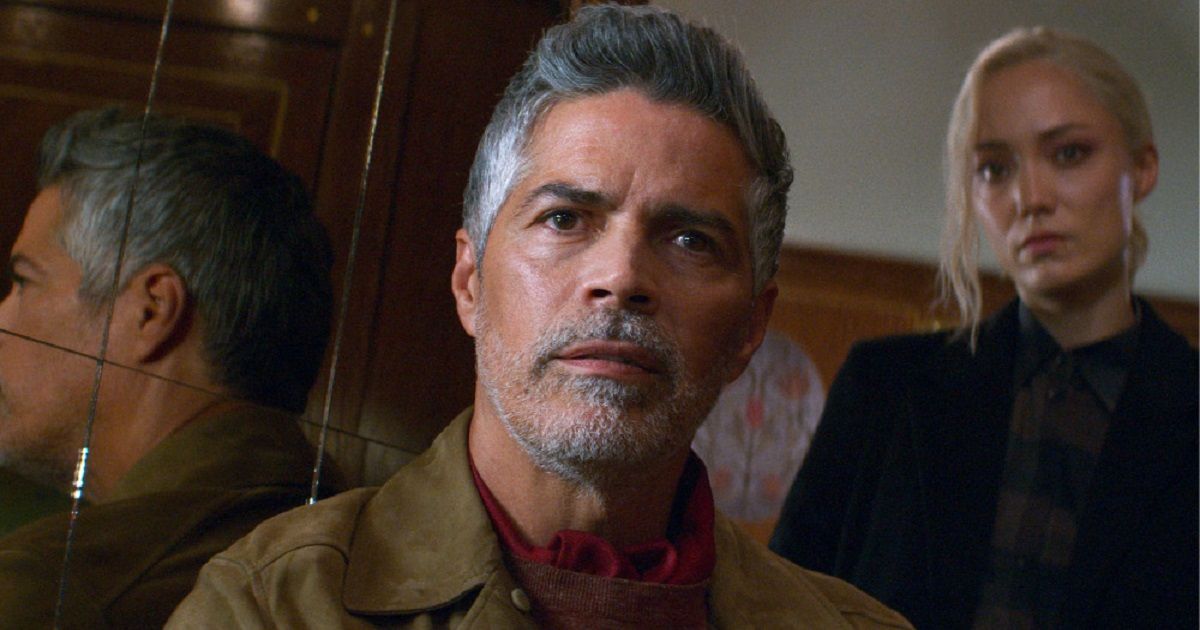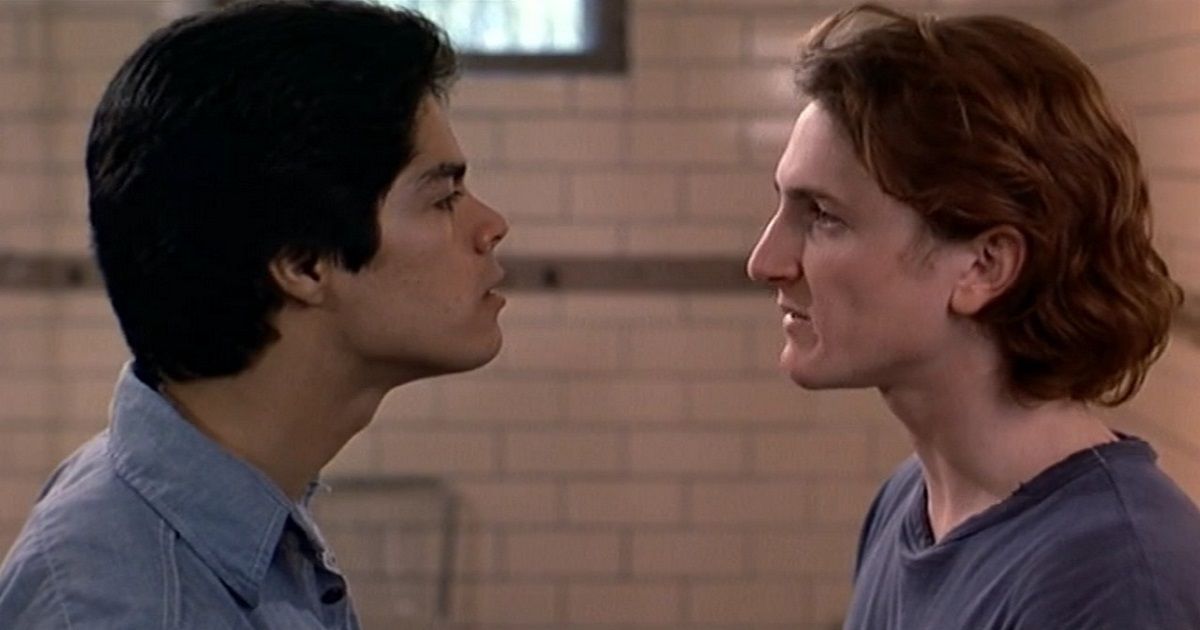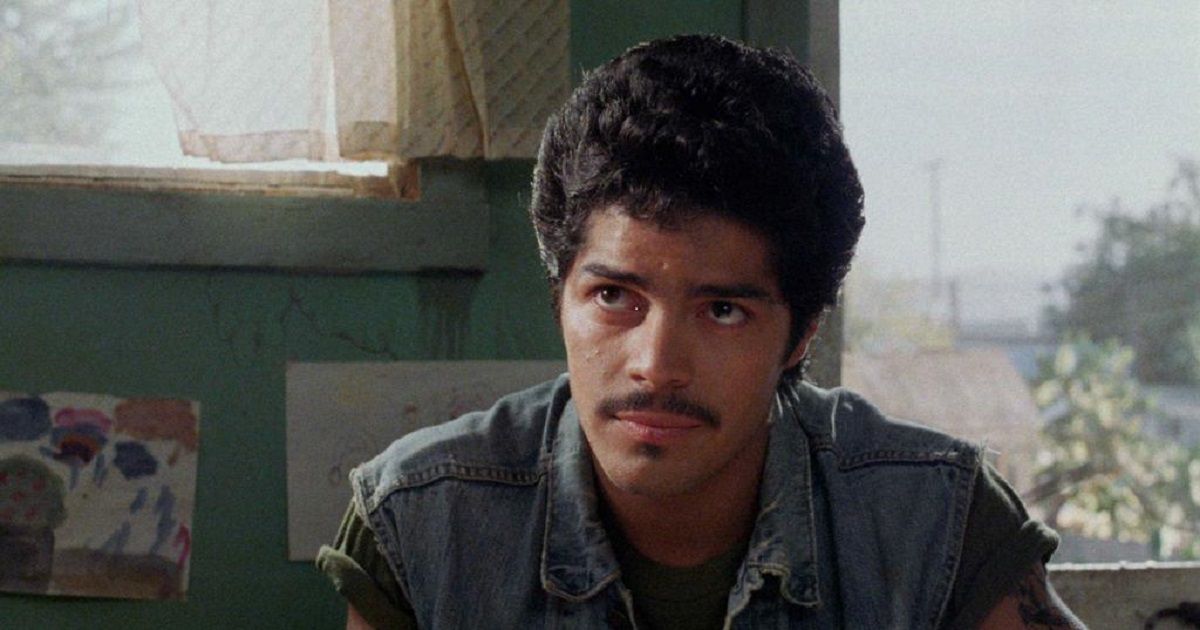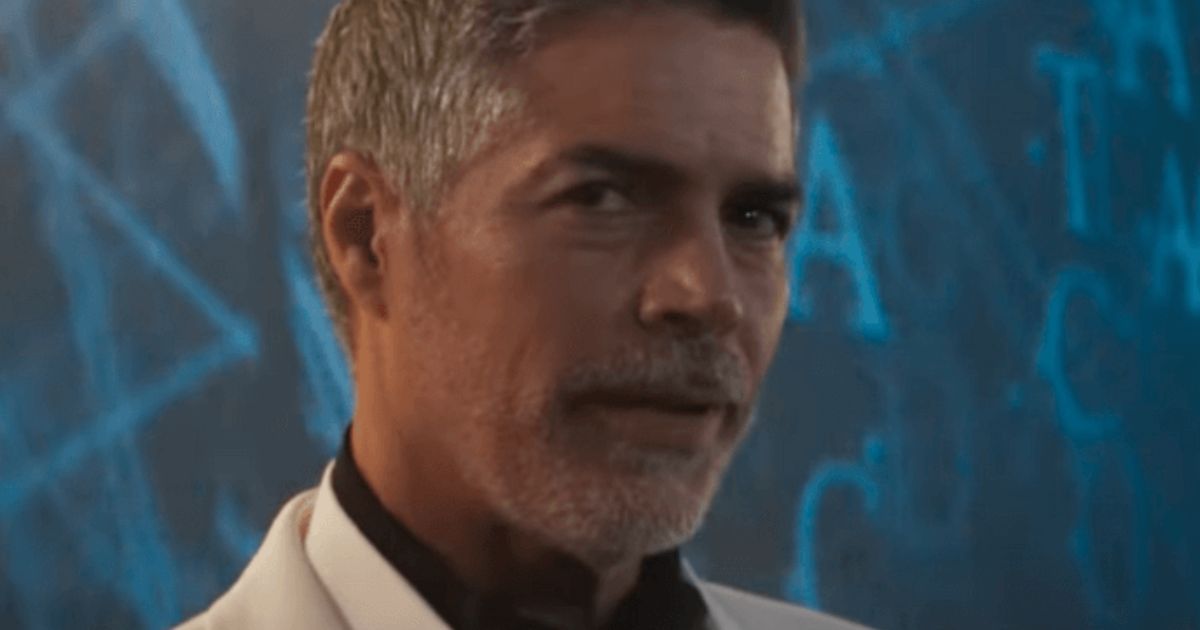While Esai Morales and Tom Cruise had never worked together prior to Mission: Impossible – Dead Reckoning Part One, they are nonetheless true contemporaries, as Cruise and Morales were both born in New York in 1962, approximately three months apart.
Moreover, Cruise and Morales both had career breakthroughs in 1983, when Cruise, of course, found stardom in Risky Business, while Morales’ career was launched with his powerful dramatic performance in the coming-of-age crime drama film Bad Boys, which stars Sean Penn, Cruise’s co-star in Taps.
However, it’s at this point that the respective careers of Cruise and Morales diverged widely, and while Cruise obviously ascended to superstardom in the 1980s, stardom eluded Morales, who, over much of the past forty years, has consistently been denied the appreciation and success that his considerable talent clearly deserves, until now.
With his menacing, textured performance as Gabriel, the main villain of Mission: Impossible – Dead Reckoning Part One, Morales’ once lagging career, which had mostly been comprised of episodic television and low-budget films over the past thirty years, has suddenly been revitalized.
Moreover, as Gabriel’s murky history with Ethan Hunt has yet to be fully unraveled, Morales’ unexpected career resurgence seems poised to continue, at least until the release of Mission: Impossible – Dead Reckoning Part Two.
Esai Morales and Tom Cruise: The Chicago Connection
Esai Morales’ breakout film, Bad Boys, was, like Risky Business, filmed in Chicago in 1982. However, while Bad Boys, along with Morales’ performance, generated strong reviews, the film was a box office failure, while Risky Business, of course, became not just a commercial and critical success but also a cultural phenomenon.
Moreover, while Risky Business presents a contrast between the grittiness of downtown Chicago and the suburban comfort of Chicago’s wealthy North Shore area, Bad Boys offers a bleak, merciless portrait of Chicago street life, as Morales’ character, Paco Moreno, is a Chicago teenager who attends high school but receives his primary criminal education on the violent streets of Chicago.
His chief rival is Sean Penn’s Mick O’Brien, another teenage hoodlum who, early in the film, attempts to rob Paco but ends up accidentally killing Paco’s younger brother. While Mick is sent to a juvenile detention facility, Paco is left to plot revenge, which begins with Paco raping Mick’s girlfriend.
Morales and Penn simply crackle in their scenes together as Paco is eventually sent to the same correctional facility that houses Mick, whose own thoughts of revenge are countered by his feelings for his girlfriend and his desire to leave the facility. Eventually, Paco tries to kill Mick with a makeshift blade but is outmaneuvered by Mick, who is poised to stab a beaten Paco to death but decides instead to spare Paco’s life.
As Paco, Morales delivers a star-making performance that didn’t make Morales a star, as while Penn obviously developed into an important film actor, if not a box office draw, throughout the rest of the 1980s and beyond, Morales’ career unfairly languished following the release of Bad Boys.
Esai Morales Dominates La Bamba
Following Bad Boys, Esai Morales’ next major film role came in the 1987 biographical drama film La Bamba, which tells the story of the life, and the short-lived career, of Mexican-American rock and roll star Ritchie Valens, who was killed, along with Buddy Holly, in a momentous plane crash in 1959.
However, while La Bamba is, ostensibly, focused on Valens, played by Lou Diamond Phillips, the film is dominated by Morales’ compelling performance as Bob Morales, Ritchie’s troubled older half-brother, who simultaneously loves and resents Ritchie, whose emerging fame highlights Bob’s failures, which Bob otherwise tries to numb through alcoholism and bursts of rage.
Unlike Bad Boys, La Bamba was a commercial success and also yielded a hit soundtrack album. Morales’ performance as Bob was singled out for praise by film critics, many of whom ignored Phillips’ own fine performance as Ritchie Valens. However, while La Bamba catapulted Phillips to short-lived film stardom, Morales’ career was left largely unchanged by the success of La Bamba.
Gabriel Almighty
One of the most interesting aspects of Esai Morales’ casting as Gabriel in Mission: Impossible – Dead Reckoning Part One is the fact that Morales is approximately twenty-seven years older than Nicholas Hoult, who was originally cast as the film’s main villain. Indeed, the casting of Morales compelled the film’s director, Christopher McQuarrie, to transform the Gabriel character into a terrorist who shares a lengthy pre-IMF history with Ethan Hunt, who obviously has strong feelings for his former close friend.
In the film, Gabriel is a devout agent for a seemingly all-powerful artificial intelligence called the Entity, which is poised to take control of all the world’s infrastructural and military systems. In explaining Gabriel’s and Morale’s role in the film, McQuarrie said:
“Casting Esai allowed us to explore the notion of Ethan’s past. Ethan has a past that predates the IMF. That allowed us to explore that with a character [who] knew Ethan before Ethan was Ethan. That’s part of who Gabriel is.”
Gabriel is a reference to the angel Gabriel, who is a herald of visions, a messenger of God who has the power to declare God’s will to mankind. Like several previous villains in the series, Gabriel seems to believe that the best, if not the only way to save mankind is to make the entire world burn, so to speak. In explaining Gabriel’s motivation, Morales said:
“Maybe Gabriel has already experienced what everybody else is afraid of, and maybe he knows something they don’t, which is that death is only the beginning.”




